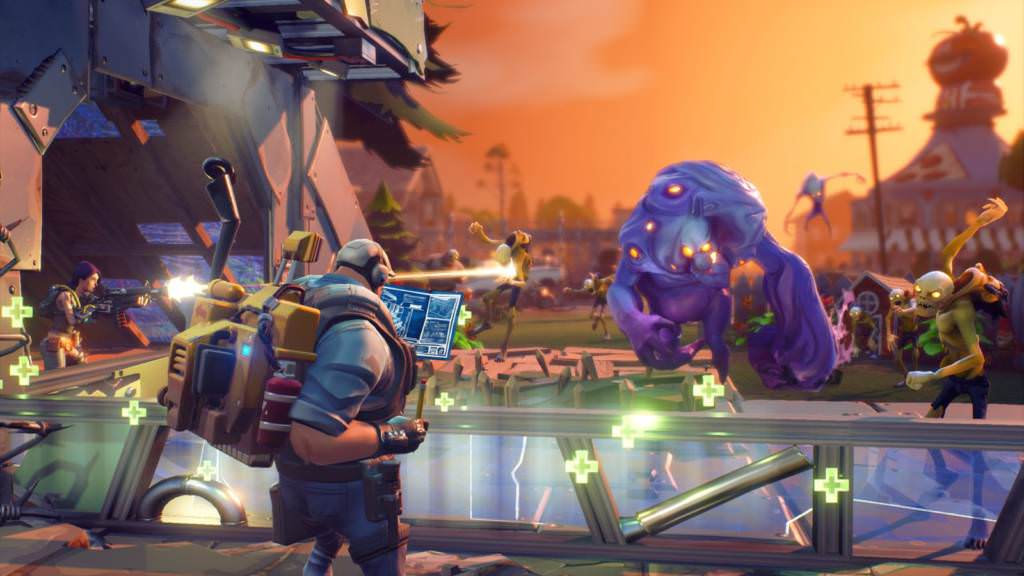Tim Sweeney delivers the opening keynote for the inaugural Devcom Developer Conference at Gamescom in Cologne, Germany on August 22. His company Epic Games has had a blockbuster release with Fortnite, on the heels of last year’s release of Paragon, and Unreal Engine 4 technology currently powers the top four games on Valve’s Steam platform.
Speaking with AListDaily, the founder and CEO of Epic Games took some time to discuss the new opportunities video game technology like Unreal Engine 4 is opening up for new industries like Hollywood and automakers, and how small game teams are developing huge hits with the technology, in this exclusive interview.
How are you seeing Unreal Engine 4 impact the video game industry?
The trend is that several years into this indie developer revolution that powered a lot of this, we’re seeing a real flight in quality. Instead of a million games a year competing for the Top 10 charts on iOS, we’re seeing more developers moving to PC, pushing high-end graphics and really innovative and deep gameplay in interesting ways. And we’re seeing new ideas and new types of games and new form factors, including the birth of some new genres of games that didn’t exist previously. It’s a really exciting time.
What do you think has been the key to the Unreal Engine’s success?
At Epic we’re game developer, and the Unreal Engine is an engine written by game developers for game developers. It really aims to solve the hard problem of enabling you to build a high-quality competitive game and then ship it efficiently. We make all the trade-offs necessary as we’re building the engine and our own games to achieve that. Of course, as a game developer, we’re on the line for it. If something sucks for you about the Unreal Engine, it sucks for us too, and we’re going to fix it right away. So, it’s a very pure business model that’s based on helping other developers succeed with the technology.
Coming out of the SIGGRAPH convention, what’s new with Unreal Engine 4?
SIGGRAPH is the graphics industry’s high-end event, where all the elite graphics nerds get together and talk about the state of the industry. We’re seeing a lot of amazing things happening in gaming and outside of gaming. We showed the Fortnite trailer running in real-time at Epic’s SIGGRAPH Real-Time Live event. It’s the first time you’ve seen a movie or a television show quality real-time animation running live in a game engine, and the production values there were really astonishing. We also showed “The Human Race,” this General Motors real-time car commercial running live in the Unreal Engine. It brings a photo-realistic car and sequences it together with mixed reality footage shot by a camera to create a really compelling experience, where can configure your car and then see it live in a car commercial.
How is real-time 3D impacting virtual reality?
On the digital human front. We feel like the area where today’s graphics technology falls short in photo realism is rendering humans, especially human animation. So, we worked together with Mike Seymour (Farscape: The Peacekeeper Wars; Spider) and some partners to create a real-time motion capture setup and demonstrate Mike’s face being captured in VR in real-time and projected it into a VR scene—interviewing people with full facial motion capture and a very realistic response. We feel like this is the most realistic human rig that’s ever been created that runs in real-time, and it’s just the very beginning of this big effort at Epic. Over the coming years, it’s going to get closer and closer to reality.
Unreal Engine 4 also is powering NBC Universal’s Zafari. How is Unreal Engine 4 invading Hollywood?
Zafari is an animated real-time kid’s TV show created by Digital Dimension. It features these very realistic animated animals with fur and a very interesting storyline behind it all. But it’s also the first high-quality television animated series that’s authored in real-time. It’s powered by Unreal and it shows that the television and movie industries are starting to move away from their offline CG production, where it takes hours to render each frame, and moving to game engines. The quality of graphics that they can get out of game engines are approaching the levels that they see in film. You’re seeing adoption across a really wide range of products. Star Wars: Rogue One included real-time pixels rendered out of the Unreal Engine for one of the droids, just to prove that the technology was possible. We’re seeing widespread adoption across television. There is some sports broadcasting work that’s going to come out powered by Unreal Engine, all running in real-time, that really highlights how game engines have grown beyond games and they’re not just engines.
How does the new TV show out of Norway, Lost in Time, tie into this technology?
The Future Group Team in Norway has been producing this really amazing kid-oriented television show that’s actually a game show. People get together and compete in a real-time competition using computer graphics and it’s broadcast live to the world. So, they’re sitting there in front of a green screen doing things like driving cars or flying space ships, and then the CG is just edited in real-time. The audience and participants all see this really interesting, completely live interactive experience. It merges computer graphics with reality in some interesting ways. This isn’t Epic entering some weird new market. What we’re seeing is all these different industries that use computer graphics, from gaming to television production and film to enterprise, all coming together and converging on a common feature set for a new digital content—that transcends all of this and brings it all together in industry ways.

